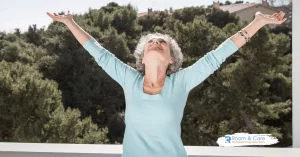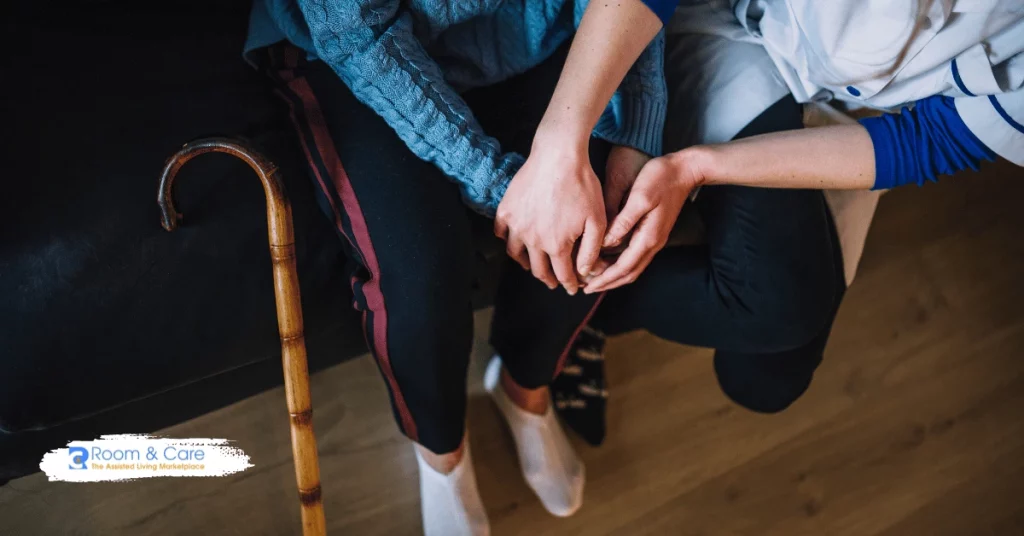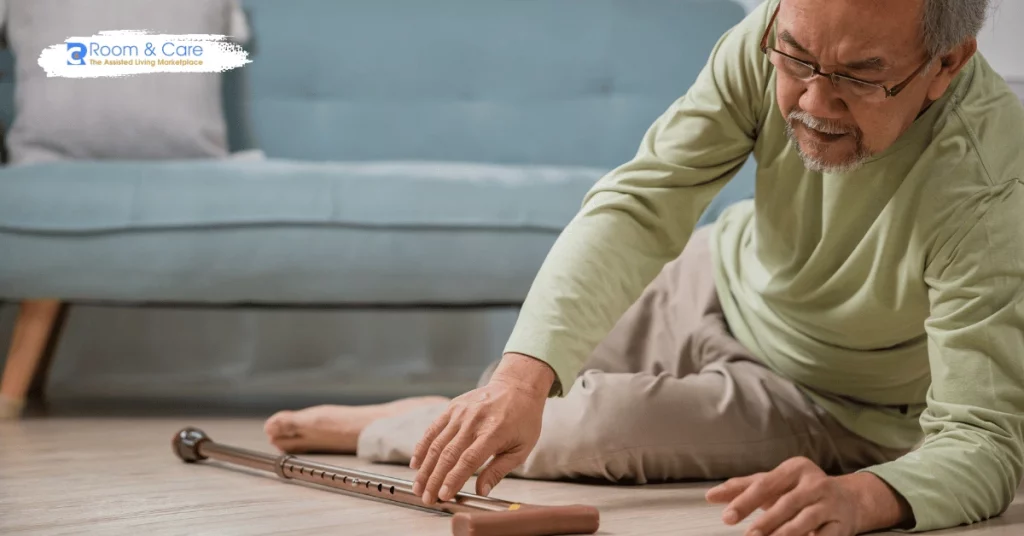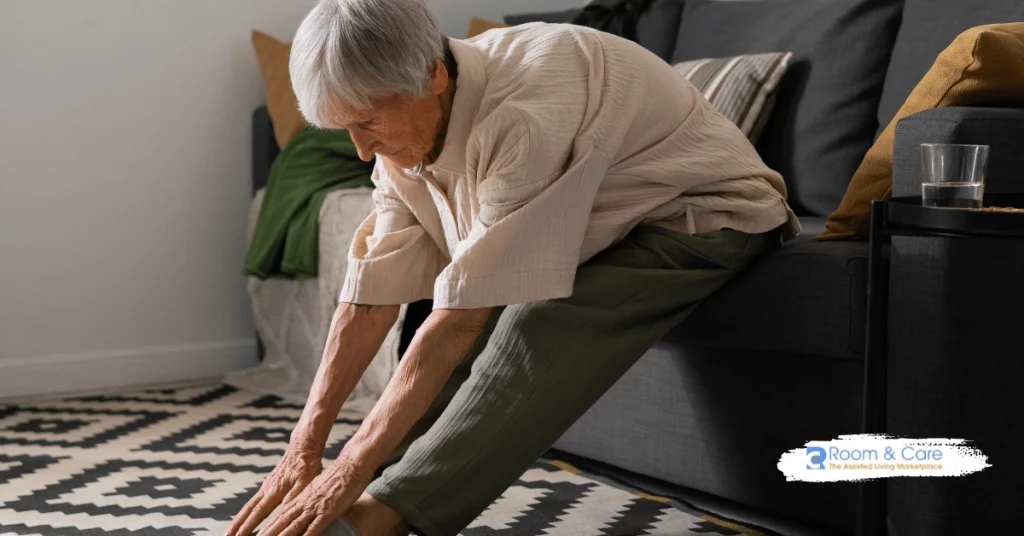

Our bodies undergo numerous changes that can affect balance, coordination, and overall mobility, which leads to a higher risk of falling as we age. Falls are a significant concern for elderly individuals, often resulting in serious injuries, decreased independence, and even fatal outcomes. In fact, fall risks for the elderly remain one of the most pressing health issues for seniors, with statistics showing that one in four adults aged 65 and older experiences a fall each year.
Understanding the causes, prevention strategies, and how senior living communities like adult family homes, assisted living facilities, and nursing homes are designed to minimize fall risks is vital for anyone involved in the care of elderly loved ones. In this comprehensive guide, we’ll dive deep into these topics, providing practical advice, tips, and insights to help you make informed decisions and take preventive measures.
Falls among seniors are often attributed to a variety of factors, ranging from physical health conditions to environmental hazards and even medication side effects. While younger individuals may recover quickly from a fall, seniors are more prone to severe injuries such as broken bones, head trauma, and long-term disability. Let’s explore the key reasons why fall risks increase as we age.
Aging naturally affects physical strength, balance, and coordination, making it more difficult for seniors to navigate their surroundings. Some of the most common health conditions that elevate the risk of falls include:
Muscle Weakness and Balance Issues: Muscle mass and strength decline with age, leading to decreased stability. Conditions like arthritis and osteoporosis further compromise the body’s ability to maintain balance and respond to sudden movements.
Chronic Illnesses: Chronic conditions such as diabetes, heart disease, and Parkinson’s disease often lead to neuropathy, dizziness, and difficulty walking, which are major contributors to falls in seniors.
Poor Vision: Vision problems, including cataracts, glaucoma, and macular degeneration, can make it challenging for seniors to see obstacles in their path. Impaired depth perception and peripheral vision also increase the likelihood of tripping or misjudging steps.
Diminished Reflexes: With age, reflexes slow down, which means seniors may not be able to react quickly enough to prevent a fall when they lose balance or stumble.
Polypharmacy, or the use of multiple medications to treat various health issues, is common among older adults. However, certain medications can cause side effects that increase fall risks, such as dizziness, drowsiness, and confusion. Some of the most common culprits include:
Sedatives and Sleeping Pills: Medications that induce sleep or calm anxiety often have lingering effects, causing seniors to feel groggy or unsteady on their feet.
Blood Pressure Medications: These drugs can lead to sudden drops in blood pressure when standing up (orthostatic hypotension), causing lightheadedness and increasing the risk of fainting and falls.
Painkillers: Strong pain medications, particularly opioids, can impair cognitive and motor function, making it more difficult for seniors to move around safely.
Cognitive disorders, such as Alzheimer’s disease and other forms of dementia, significantly raise the risk of falls. Seniors with cognitive impairments may have difficulty remembering to use assistive devices, may become disoriented in familiar surroundings, or may simply lose awareness of their physical limitations.
The living environment plays a major role in fall risks. Hazards such as uneven flooring, poor lighting, and cluttered spaces can turn a safe home into a danger zone. For seniors living at home or in senior living communities, it’s important to identify and eliminate these risks.
Loose Rugs and Cords: Cords, rugs, and other loose items on the floor are common tripping hazards.
Slippery Surfaces: Bathrooms and kitchens are especially prone to slippery surfaces, which can cause falls.
Insufficient Lighting: Poorly lit hallways and staircases make it harder for seniors to spot obstacles.
A significant, yet often overlooked, factor in fall risks is the fear of falling itself. Seniors who have experienced a fall or have witnessed others fall may become overly cautious, leading to reduced activity levels. Ironically, this reduction in activity results in weaker muscles and diminished balance, further increasing the likelihood of a fall.

For families considering assisted living or nursing care for their elderly loved ones, understanding how senior living communities address fall risks is crucial. Many of these communities implement specialized fall-prevention strategies to keep residents safe while maintaining their independence.
Assisted living facilities are designed for seniors who need help with daily tasks but still want to maintain an active, independent lifestyle. These facilities often take extra measures to ensure safety:
Handrails and Grab Bars: Strategically placed handrails in hallways and grab bars in bathrooms provide residents with added stability.
Regular Safety Inspections: Assisted living facilities conduct routine inspections to identify and address any potential fall hazards, such as uneven flooring or poor lighting.
Exercise Programs: Physical fitness programs designed to improve strength and balance are often offered, helping residents reduce their fall risk.
Emergency Call Systems: In the event of a fall, emergency call systems are installed in rooms and common areas, allowing residents to quickly summon help.
Nursing homes provide a higher level of medical care and supervision, making them ideal for seniors who are at significant risk of falls or have health conditions that require constant monitoring.
24/7 Care: Nursing homes have staff available around the clock to assist with mobility, daily activities, and medical needs, which significantly reduces the chance of falls.
Personalized Care Plans: Each resident receives a care plan tailored to their individual health needs and fall risks. This includes regular assessments and adjustments to ensure they are receiving the appropriate level of support.
Mobility Aids: Staff in nursing homes are trained to assist residents with mobility devices such as walkers and wheelchairs, and to provide help during transfers (e.g., getting in and out of bed).
Adult family homes offer a more intimate, home-like setting for seniors, typically accommodating a small number of residents. This smaller environment allows for personalized care and attention to fall prevention.
Close Supervision: With fewer residents to monitor, caregivers can offer more individualized attention, ensuring that each person’s fall risk is effectively managed.
Home Modifications: Adult family homes are often modified to meet the specific needs of elderly residents, with non-slip flooring, handrails, and barrier-free entryways.
Tailored Activities: Caregivers in adult family homes can tailor physical activities and routines to the abilities and limitations of each resident, helping to strengthen muscles and improve balance.
Whether your loved one lives independently, with family, or in a senior living community, there are several steps you can take to reduce the risk of falls:
Regular exercise is essential for maintaining muscle strength, flexibility, and balance. Even light activities such as walking, water aerobics, or chair exercises can make a big difference. Consider exercises that focus on balance and coordination, such as yoga or tai chi.
Simple home modifications can go a long way in preventing falls:
Install Grab Bars and Handrails: These are especially important in bathrooms and along staircases.
Ensure Adequate Lighting: Place nightlights in hallways, bedrooms, and bathrooms, and consider installing motion-sensor lights to illuminate dark areas.
Remove Hazards: Keep walkways clear of clutter, secure loose rugs, and ensure that cords are safely tucked away.
Use Non-Slip Mats: In areas prone to moisture, such as bathrooms and kitchens, non-slip mats can provide much-needed traction.
Scheduling regular checkups with your loved one’s healthcare provider can help identify and manage underlying conditions that may increase fall risks. Additionally, annual eye exams can help ensure that vision problems are caught and treated early.
Review all medications regularly with a healthcare professional to identify potential side effects that could contribute to dizziness or confusion. Ask the doctor if any medications could be adjusted or replaced with alternatives that have fewer side effects.
Make sure that seniors who require mobility aids such as canes or walkers are using them correctly. Improper use of assistive devices can actually increase the risk of falling, so it’s important that these devices are fitted and adjusted to the individual’s needs.

While it’s impossible to prevent all falls, especially for seniors with multiple risk factors, taking the right precautions can significantly reduce the likelihood of a fall occurring. Implementing a combination of physical activity, environmental modifications, and medical oversight can make a world of difference.
Some common signs that an elderly person may be at a higher risk of falling include frequent tripping or stumbling, difficulty standing up from a seated position, and a history of falls. If your loved one shows any of these signs, it may be time to consult a healthcare provider or explore senior living communities that offer specialized care.
If a fall occurs, it’s important to remain calm. Check for injuries, and if the fall resulted in pain, bruising, or difficulty moving, seek medical attention immediately. Even if no visible injuries are present, a doctor should evaluate your loved one to rule out any internal damage.
For many families, senior living communities offer the safest environment for elderly loved ones at high risk of falls. These communities are designed with senior safety in mind, from accessible living spaces to round-the-clock care.
At Room and Care, we specialize in helping families find the perfect senior living option, whether it’s an adult family home, an assisted living facility, a memory care unit, or a nursing home. Our platform connects you directly to the best options available—without the need for middlemen or referral fees—allowing you to make cost-effective decisions that prioritize your loved one’s health and safety.
Falls are a serious concern for elderly individuals, but with the right approach, they can be minimized. Whether through personal care, home modifications, or transitioning to a senior living community, the steps we take today can ensure a safer tomorrow for our loved ones.
By addressing fall risks for elderly individuals, we empower them to live more confidently and independently. Take the next step today by exploring the best care options for your loved ones.